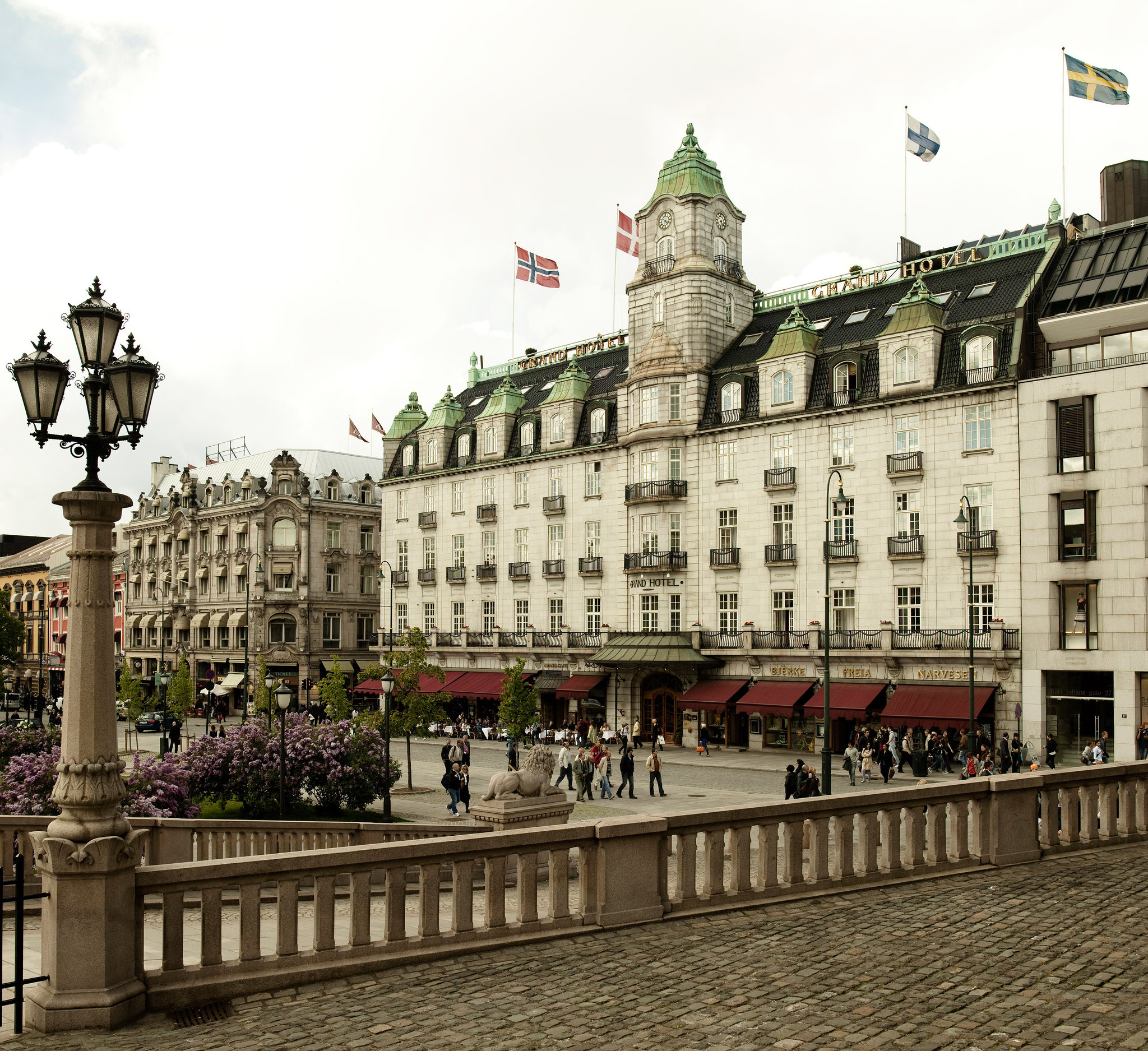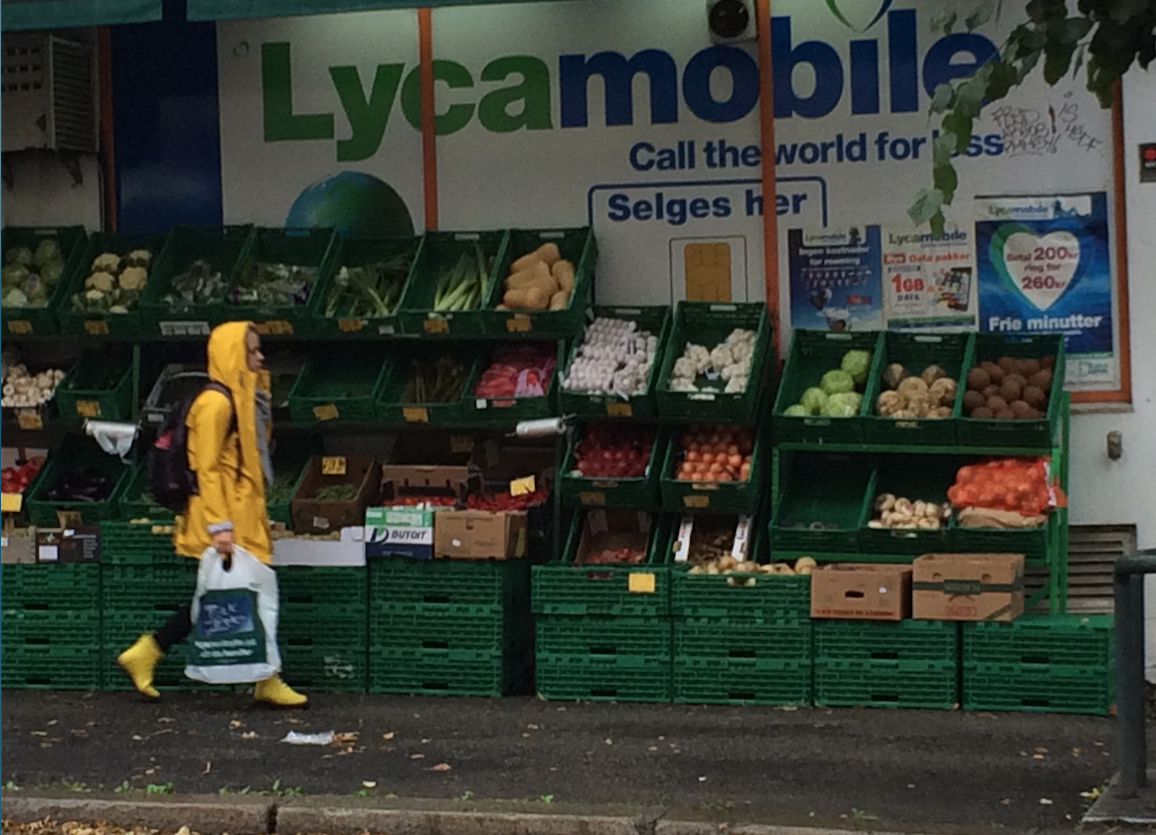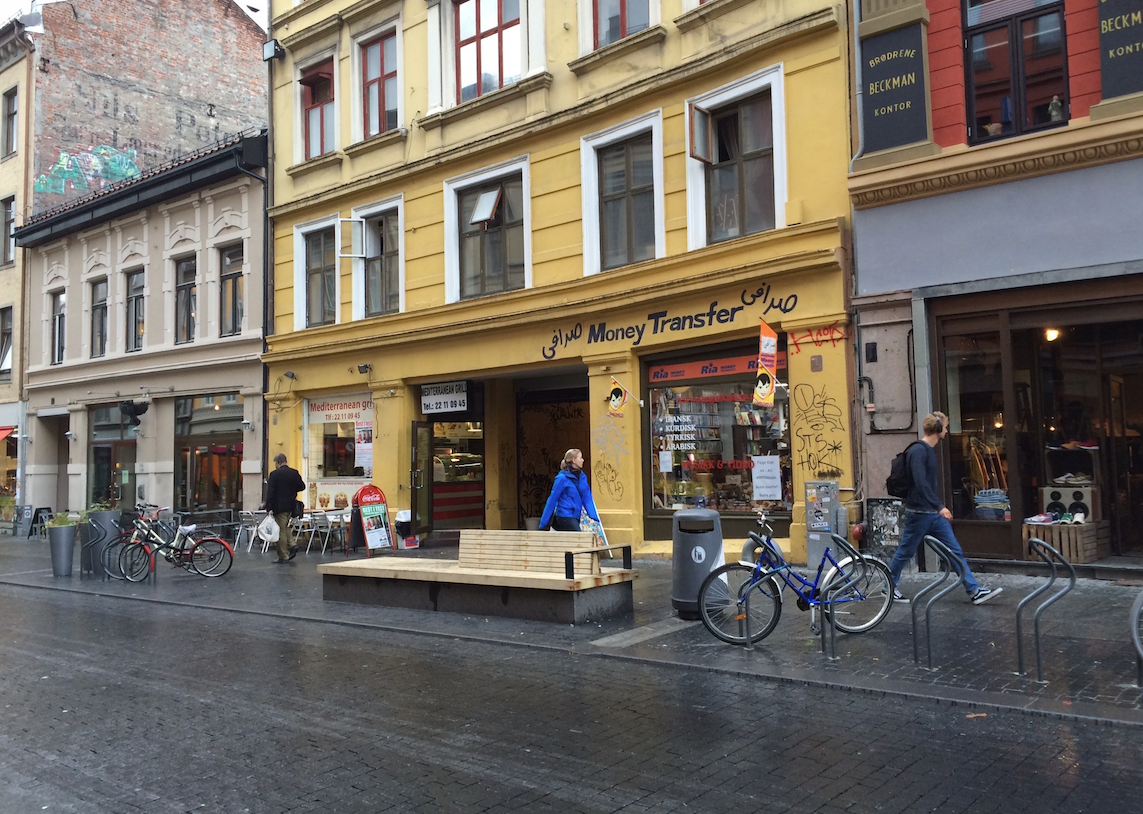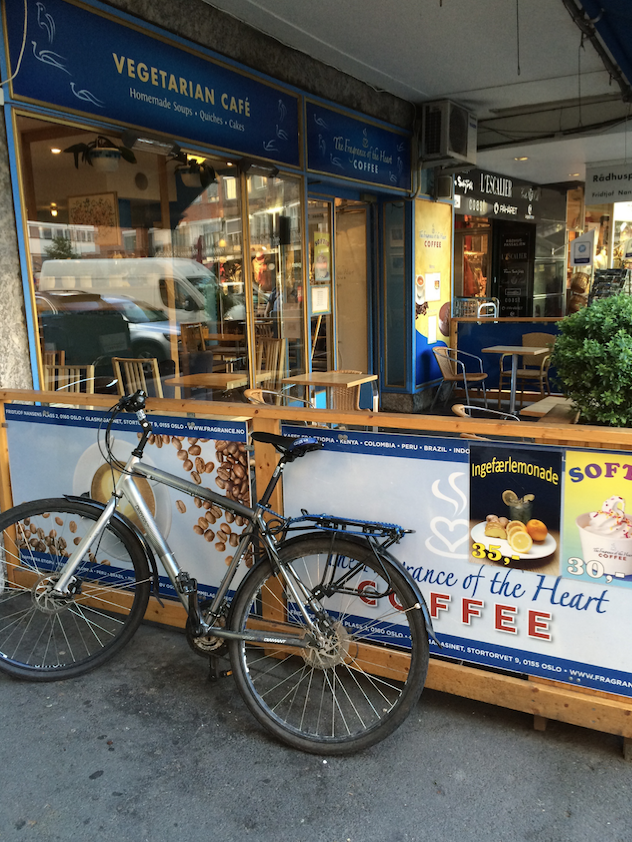
A Vegan in Norway: Food, Policy, and Public Attitudes (Part IV)
Mia MacDonald traveled to Norway in October 2015 to visit the Nobel Peace Center in Oslo and to be a tourist. This blog is the third in what will be a four-part series on her experiences and observations during the trip.
Some context for my trip: Norway’s current wealth is based on the exploitation of oil and gas reserves located in the North Sea in the late 1960s. Timber and fish farming are also major industries. But a national “green” agenda exists, too, and is getting stronger. Recent Norwegian governments have dedicated hundreds of millions of dollars to forest conservation in places like Brazil and Indonesia. And transitioning to a “green economy” less dependent on fossil fuels and promoting of renewable energy is a national policy priority.
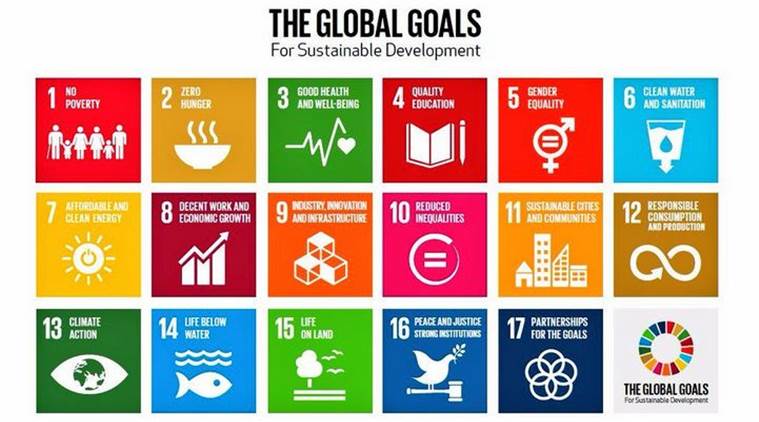
Sustainable Development Goals
In September, I heard Norway’s government minister for climate and the environment speak as part of the UN Sustainable Development Goals summit in New York. Norway aims to be a “low emission nation” by 2050, she said. “Carbon taxes are smart” she added, and said the government was developing a plan to reduce food waste.
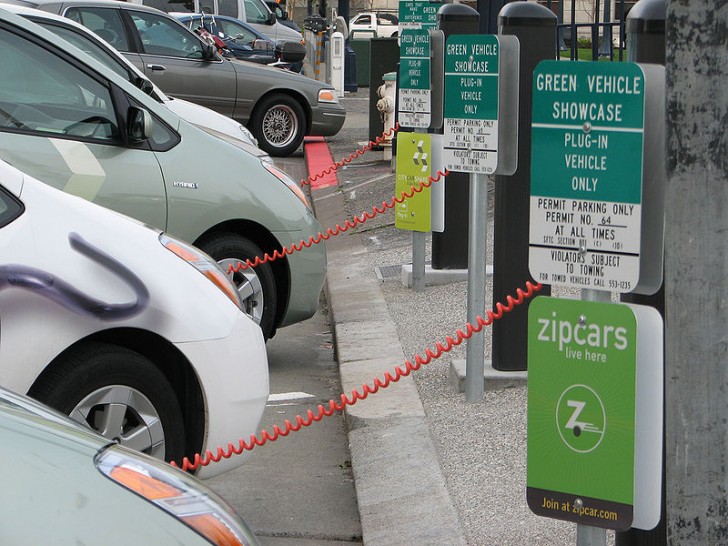
Electric Car Charging Station
Norway is also encouraging its citizens to buy electric cars and is offering generous subsidies to make this more likely. “It has to be more expensive to pollute than to use environmentally-friendly fuels,” Norway’s deputy minster of climate and environment told the International New York Times. So far, Norwegians have purchased nearly 70,000 all-electric cars.
But contradictions persist. Norway is one of only two countries in the world that disregard the International Whaling Commission ban on the commercial hunting of whales (Iceland is the other). In 2014, Norway killed 736 minke whales, a record number. Less than 5 percent of Norwegians it’s estimated want to eat whale meat, which is associated with the country’s poorer past and can hardly be seen to fit with Norway’s new “green” image. The whales are also feeling the effects of marine pollution and run off from land-based agricultural operations.
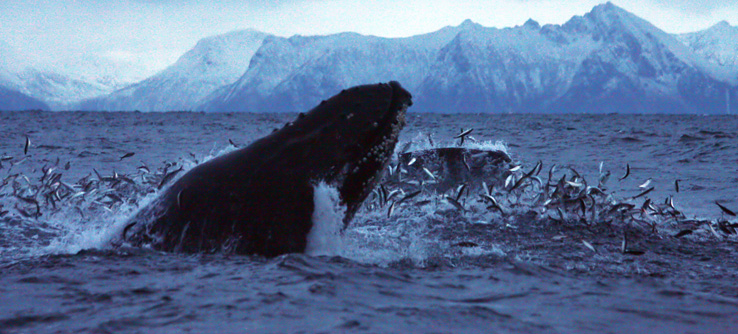
Whales
Earlier this year when Norway sought to export the meat of the hunted whales to Japan, Japan balked. It cited heavy contamination of the “meat” with pesticides like aldrin, dieldrin and chlordane that are known to cause birth defects and even cancer.
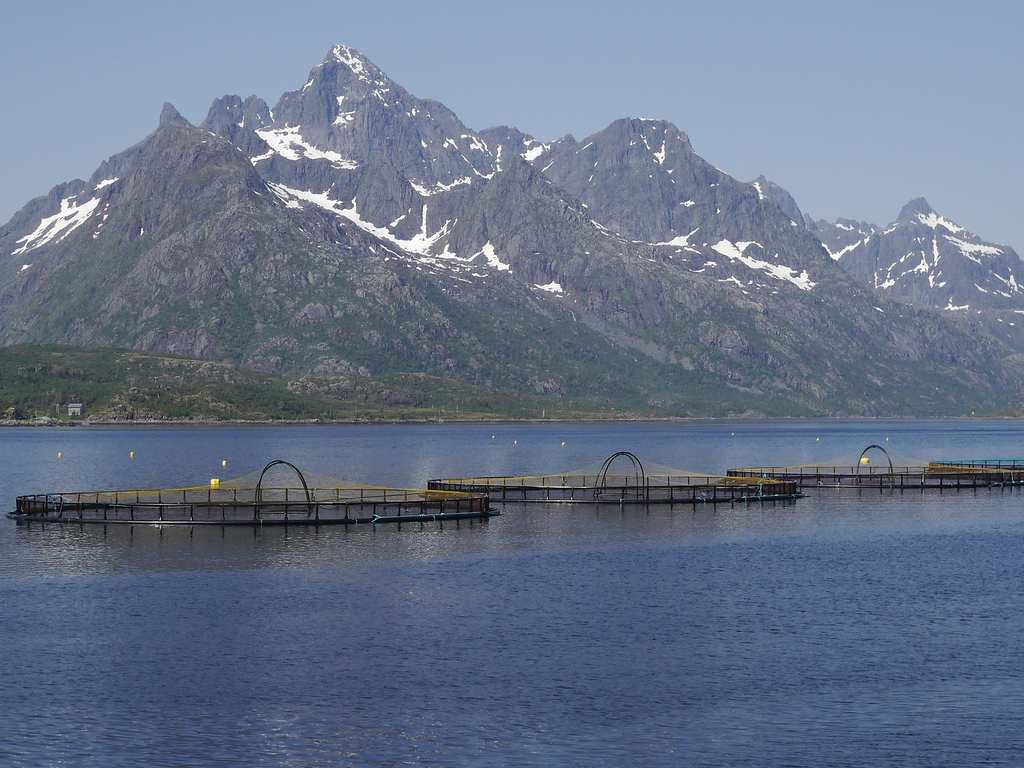
Factory Fish Farms
Norway is also the world’s largest producer of Atlantic salmon, and the second biggest exporter of seafood. Most of Norway’s fish farms resemble factory farms on land. They are crowded, mechanized, and often riddled with sea lice. The concentrated fish wastes are polluting, too, realities that the Norwegian fisheries department admits are environmental hazards. Still, the fishing industry is economically important and has strong government support. Interestingly, the world’s top exporter of seafood is…China.
A Vegan in Norway: Food, Policy, and Public Attitudes (Part III)
Mia MacDonald traveled to Norway in October 2015 to visit the Nobel Peace Center in Oslo and to be a tourist. This blog is the third in what will be a four-part series on her experiences and observations during the trip.

Literature House
Away from Fragrance of the Heart. I got the sense that “vegan” and “vegetarian” are becoming more mainstream in Norway, both the words and the ideas behind them. The existence of the Vegan Oslo website and app suggest this, and the creators of that say Vegan Norway versions are in the works. Some other evidence: I had dinner one evening at Oslo’s Literature House and the menu had vegetarian options. When I asked about a vegan meal, the chef came out of the kitchen, spoke to me in perfect English, and prepared a really nice vegetable plate with orzo, Italian pasta, leafy greens and mushrooms that tasted like they’d just been dug up from the soil. My Norwegian colleagues suggested that maybe they had been; after all, it was summer and I learned Norwegians love foraging, particularly for berries.
At another dinner, in a home just outside Oslo, my hosts cooked an excellent vegan pasta dish for me – fresh mushrooms, spinach, and lots of garlic and olive oil – that they ate too…although along with a plate of lamb chops. The concept of “hipster” is in among Oslo’s young people, one of my hosts told me. Her teenage daughter is a fan of “hipsterism”, and the Grünerløkka neighborhood of Oslo, which I’d planned to visit, was a center of hipsterdom.
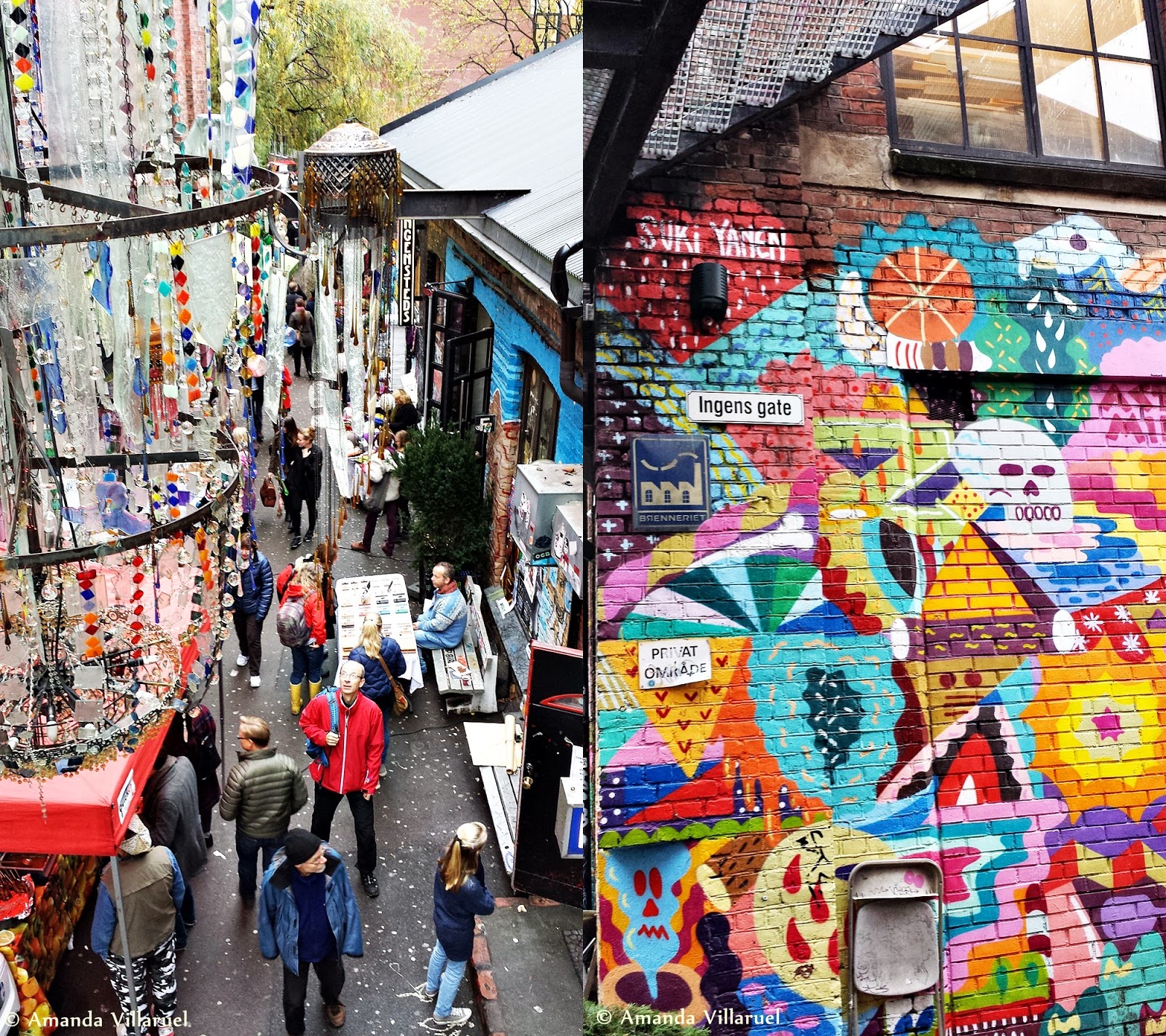
Grunerlokka-today
I set off for Grünerløkka the next day. First I visited the Edvard Munch Museum, and then strolled through the botanical gardens on a rainy, cool day that made the shrubs and flowers look fresh and lovely. The weather was a sign that the Norwegian summer was coming to an end. On the western side of the gardens, I explored some of the terrain of Grünerløkka. I passed Middle Eastern restaurants, cafes, and several small shops stores selling vegetables. I’d expected to see mostly potatoes or other plants that grow in the ground, a monochrome display. But I was pleasantly surprised by how much produce was available and the varied colors and textures of it; perhaps they were made more vibrant by the backdrop of grey weather.
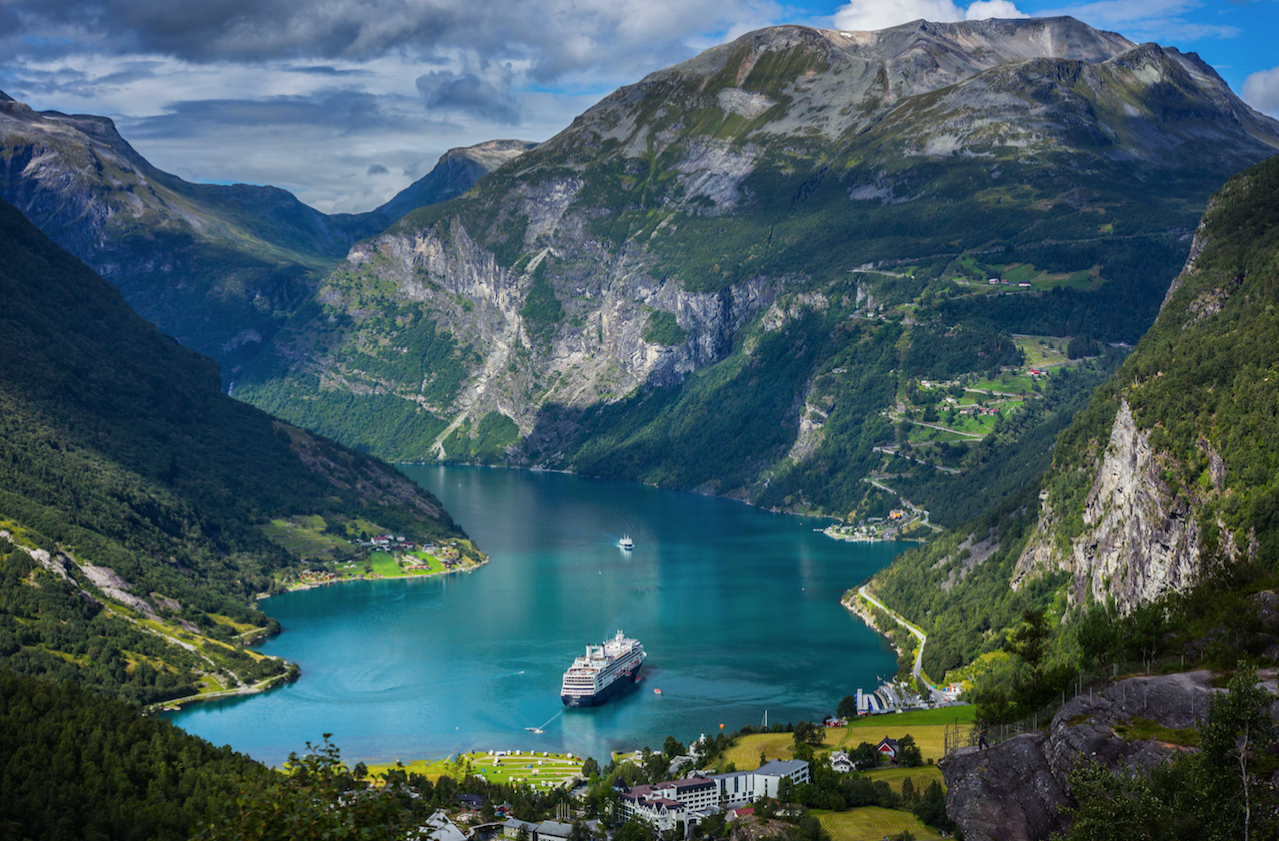
Mountains and Fjords
I was also on the outlook for a vegan restaurant, housed on a street I could see on my map. I’d anticipated a good meal. I couldn’t, though, find the number. And I didn’t have service on my phone to open up the Vegan Oslo app, even though it would have been a perfect time to use it. So, I never got to what I thought was my destination. Instead, I found myself back near the center of the city. I ended up eating the free dinner in my hotel. It wasn’t terribly vegan friendly, but I could eat several salads and bread, and that was good enough. That was my last night in Oslo. I never got to leave the city to visit the mountains and fjords as part of an epic, 12-hour (or more) train journey I’d read about. I simply didn’t have enough time. Maybe that means a return visit is in order and without another gap of 10 years.
Vegan Exposures in the Latest Sustainable Events in D.C.
From the Food Tank Summit to the Green Festival Expo, springtime in Washington D.C. is seeing the sustainable food revolution heating up. Danielle Nierenberg, founder and president of Food Tank, started off the summit by saying, “I’m frankly tired of hearing about how bad things are … we are here to focus on innovative solutions.” Solutions are being applied to make changes in the real world.
At the 2016 Food Tank Summit, 70 farmers, chefs, scholars, business owners, policy makers, writers, reporters, and activists shared the latest trends and actions in the sustainable food and agriculture movement. Topics include interdisciplinary collaborations, nutrients in foods, protein of the future, food and national security, food waste and recovery, progresses in policy, investment and entrepreneurship, organic food and agriculture, social equity and fair trade, and last but not least, family farmers who lead the change with their hands.
The summit set a stage where global-level challenges in the food and agriculture system were presented, and cutting-edge efforts at local and community levels organically blended into the picture. By connecting knowledge, experience, and passion, both face to face and through touch screens, interactions that took place during the two days are able to inspire, motivate, and accelerate actions around the world.
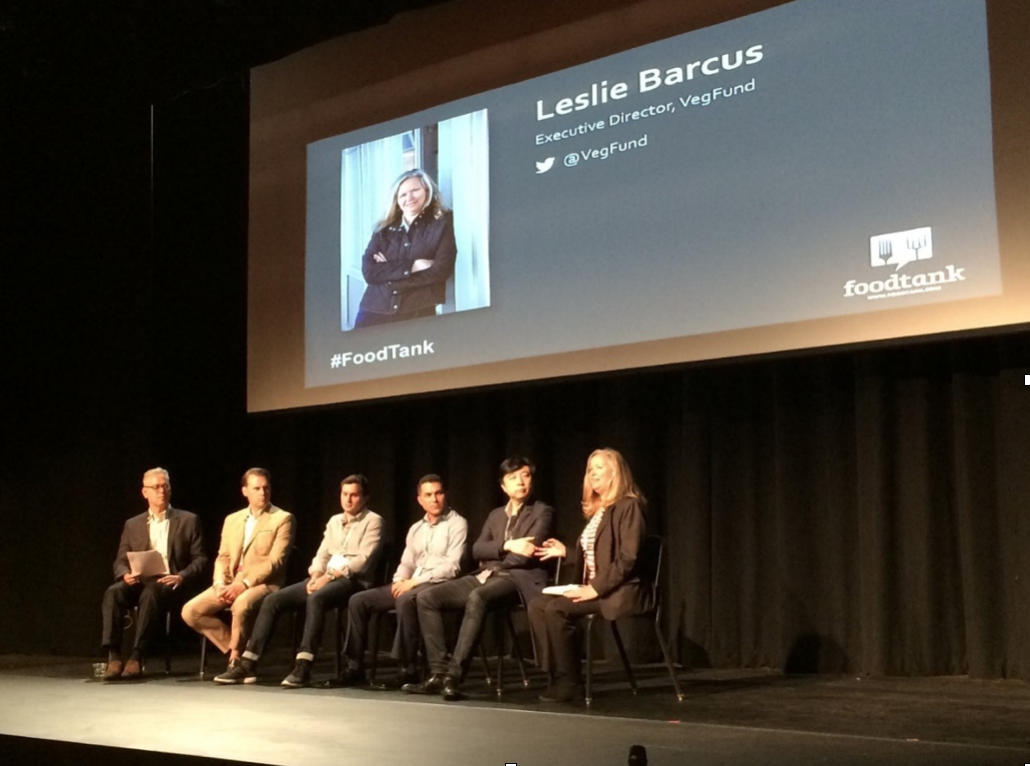
Leslie Barcus speaking at the “Protein of the Future” panel.
At the panel on sustainable protein sources, alternatives from organic grass-fed beef to cricket powder were discussed, while Leslie Barcus, president of VegFund pointed out that plant-based proteins can meet the nutrient needs of humans. And although some ideal animal farming practices, such as regenerative grazing, value the interconnection and interdependence in the ecosystem and refrain from harming predators, Leslie highlighted the real threat posed by many sustainable animal farming operations to wild predators like coyotes.
During the Q&A session of the panel, comments and questions from the audience repeatedly emphasized that animal products are not the only source of protein, and that plant-based proteins contribute more to people’s health while lowering the risk of chronic diseases such as cancer and type-2 diabetes.
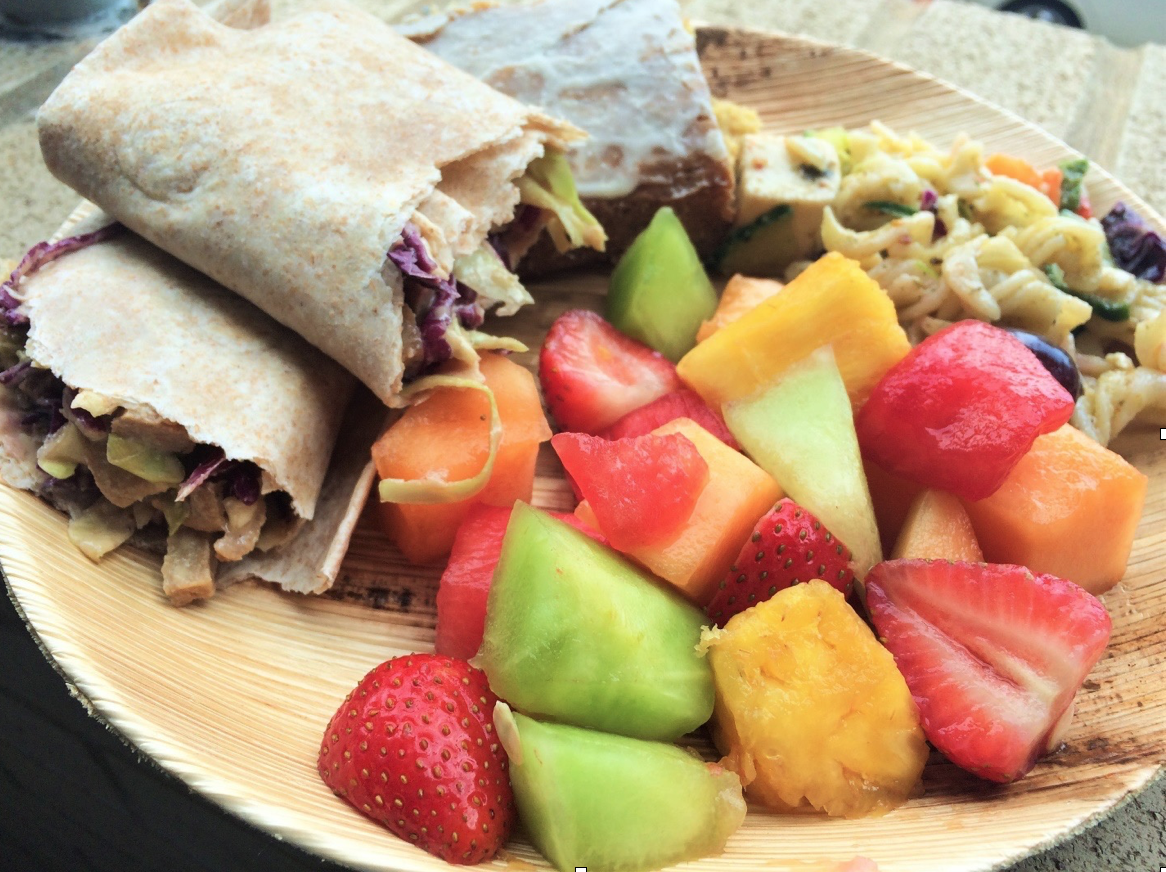
Vegan lunch option

Vegan lunch option
VegFund also sponsored vegan lunch options during the summit, provided by Calabash on the first day and PEP Foods on the second day. The foundation also contributed to the Green Festival Expo in Washington D.C., which went a step further – all the foods and drinks at the food court were vegetarian, most vegan, provided by Khepra’s Raw Food Juice Bar and Nyota’s Ting International Vegetarian Catering Company.
A strong theme of plant-based living could be found among many speakers at the expo, from the experience of fighting obesity and reversing disease, to building “vegan muscles”. The screening of the documentary Cowspiracy occupied the lunchtime slots at the center stage for two days, attracting a good audience.
Exhibitors at the expo also shared their stories and visions about plant-based lifestyles. Sherimane, owner of the NaturallySweet Desserts vegan bakery, gradually went off medication by switching to a vegan diet. As a real life example, Sherimane is helping customers enjoy healthy eating and healthy lives.
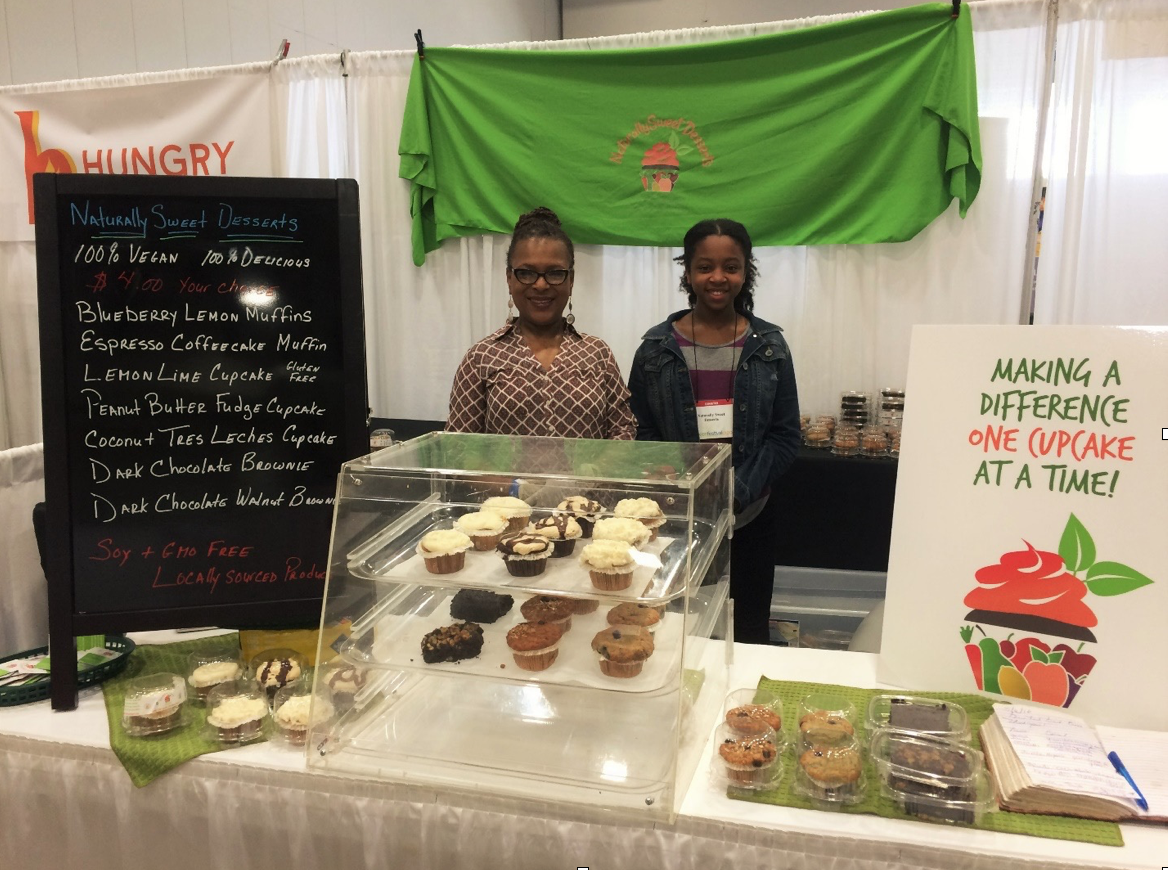
Vegan dessert at the Green Festival Expo
Photographs by Wanqing Zhou
A Vegan in Norway: Food, Policy, and Public Attitudes (Part II)
April 1, 2016
Mia MacDonald traveled to Norway in October 2015 to visit the Nobel Peace Center in Oslo and to be a tourist. This blog is the first in what will be a four-part series on her experiences and observations related to food, policy, and public attitudes. Here’s a snippet from the blog (which can be read in its entirety here):

Wangari Maathai House
I’d planned my trip to Norway with two main aims: first, to visit the Nobel Peace Center in Oslo, which documents and celebrates the life and work of Nobel peace laureates. My trip to Oslo in 2004 was for what I expect will be a once-in-a-lifetime experience. I went to attend the Nobel peace prize ceremonies for my mentor and all-time heroine, Wangari Maathai, the Kenyan environmentalist and campaigner for democratic space, equitable and sustainable development, and women’s equality. Wangari was the first African woman and first environmentalist to be awarded the Nobel Prize for peace. A project to honor her legacy and ensure her pioneering work reaches new generations, the Wangari Maathai House, is being launched in Nairobi. I’ll have a role in making it a reality.

Viking ship
My second reason was to be a tourist. I wanted to visit Oslo’s best-known museums, spanning thousand year-old Viking ships and the expressionist art of Edvard Munch, see the new waterfront opera house where you can walk on the roof, and also experience Norwegian nature like fjords, mountains, and intact glaciers.
I arrived near the end of Norway’s summer. It’s a short season of long, warm, sunny days and usually blue skies that helps Norwegians endure the equally long, cold, dark winters. When I was in Oslo in 2004, there wasn’t any snow, but the sun was setting at 3:30 in the afternoon and rising about 9:30 in the morning, making those the shortest days I’d ever experienced.
My first night in Oslo in August, I’d gone for a walk to the City Hall where the Nobel peace prize is given to refresh my memory of those events. Along the curved street that leads up to the hall, I spotted a branch of 7-11, the U.S. convenience store. Oh, no, I thought: how ugly, how unhealthy. How could a 7-11 be located here, directly across from the City Hall where I’d attended the elegant Nobel ceremony? It depressed me to see this outpost of fast food culture – one of the worst U.S. exports to the world — here in the heart of Oslo.
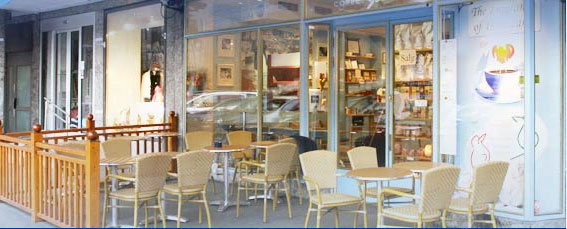
Fragrance of the Heart
But then I saw something encouraging and also surprising (I hadn’t yet accessed the Vegan Oslo app). Across the traffic circle, on the same curved street as the 7-11, was a vegetarian restaurant, Fragrance of the Heart. It was open. And it was busy. Wow, I thought, dinner wouldn’t have to be an apple or some dried nuts after all.
Fragrance of the Heart became a place I went to eat lunch or dinner, or to have a soy café latte, every day but one that I was in Oslo. The food was hearty, as opposed to gourmet: flavorful and filling “comfort food” like quiches, vegetable pies, wraps, soups, salads, along with quite a few desserts. There were vegan and gluten-free options, and plenty of coffee and several non-dairy milks to drink with it. Fragrance of the Heart used this as a marketing point (it advertised its “coffee club” on signs) and probably an entry point for people who wouldn’t otherwise necessarily go to a vegetarian restaurant.
So what did I eat? Lentil soup, spinach soup, a thick gluten-free vegetable pie made from cauliflower and various grains, and green salads with a light dressing that was very good. I always felt full when I left Fragrance of the Heart. Come to think of it, I never ate any of the desserts. What I liked about the restaurant in addition to the food was the atmosphere. It was casual and friendly, and also international. I heard people speaking lots of languages: English and Norwegian (of course), as well as German, Chinese, Japanese, and European languages I didn’t recognize.
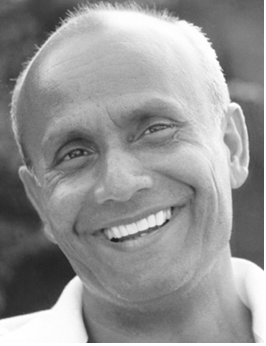
Sri Chinmoy
The workers, all men when I visited, came from across Europe. A few had actually just been in New York, because Fragrance of the Heart is, not entirely unlike 7-11, part of a chain of sorts. The restaurant is one piece of the legacy of Sri Chinmoy, an Indian spiritual teacher. For many years until he died in 2007, Sri Chinmoy was based in Queens, one of the five boroughs of New York City. (I live in another one, Brooklyn.) Some of his disciples run restaurants in cities around the world that are also centers for sharing Sri Chinmoy’s teachings, his meditation instruction, as well as his music (mainly flute) and art.
But the “selling” of Sri Chinmoy was soft; you weren’t pushed to consume the philosophy with the food. The prices were fair, too: between $15 and $20 for each of my meals. That seemed about right. Fragrance of the Heart has another branch in Oslo, also centrally located, near the main pedestrian street, Karl Johanns. I stopped by that one, too, to pick up a cookie my last night in Norway.
A Vegan in Norway: Food, Policy, and Public Attitudes (Part I)
Mia MacDonald traveled to Norway in October 2015 to visit the Nobel Peace Center in Oslo and to be a tourist This blog is the first in what will be a four-part series on her experiences and observations during the trip.
Oslo, Norway’s capital, has a reputation, which is deserved, for being expensive. When I visited the city 10 years ago, I recall eating a salad for lunch that cost about U.S.$25. It was very good, full of fresh field greens and raw vegetables. But the cost was about 2.5 times what it would have been in New York City, where I live and most often eat. So when I went back to Oslo in August, I planned to eat as little as I could and as cheaply. I was curious about whether veg*n cuisine had taken hold in Norway and how “veg-friendly” Oslo would be. I hoped I’d have more options to eat well and affordably than I’d had in 2004. I figured I wouldn’t eat a salad like that again, given the price!
To be fair, I’d eaten that salad at the café of the Grand Hotel, an Oslo landmark. The Grand is not only luxurious but also historic. It’s where Nobel peace laureates are lodged when they receive their prize each December 10th. American TV icon Oprah Winfrey stayed here when she hosted the Nobel peace prize concert in 2004 (which I attended). Norwegian writers and artists like Henrik Ibsen and Edvard Munch, used to eat lunch in the Grand Hotel’s café a century or so ago. (I learned at Oslo’s Ibsen Museum that, despite knowing many of his fellow diners in the café, Ibsen rarely spoke to any of them, including his friend the painter Munch.)
So before I left New York I did some research and was surprised and pleased to find a Vegan Oslo website that helpfully offered a Vegan Oslo app that I downloaded to my phone. My expectations, though, weren’t high. “Their diet is the worst,” a friend, not a Norwegian herself, told me. She recounted meals full of meat (lamb, mutton and “cured” meats like sausages) or fish (mainly salmon), potatoes and cheese, and with very few vegetables.
My friend’s perception showed up in the data. Norwegians eat relatively high levels of meat: 66 kilograms a year each (more than in China), along with a lot of cheese. They even outdo Americans. Each Norwegian ate an average of 18.1 kgs of cheese in 2013, while in the U.S. the total was 15.4 kgs each. And data from the UN Food and Agriculture Organization shows consumption of meat in Norway rising, at least through 2011.
In line with its small population of 5.1 million people, Norway has a relatively small livestock sector. But livestock are Norway’s main agricultural “product.” The sector’s shape, though, is changing. The number of cows in Norway fell by 16 percent between 2000 and 2010, to about 600,000. And the number of number of pigs and chickens rose a lot, as it is in many countries: the population of pigs grew by 16 percent, while the number of poultry (mainly chickens) leaped up by about 50 percent. Of course, like the rest of Europe and other developed countries, industrial animal agriculture exists in Norway.
Conditions tend to be more intensive – and worse overall – for pigs and chickens than they are for cows used for meat or dairy. At the same time and again, like people in other parts of Europe, animal welfare and “healthy food” rank high for Norwegians, according to a 2013 survey of agricultural policies. Reducing food prices was given much lower priority by those participating in the survey, and the use of GM (genetically modified) seeds wasn’t popular with Norwegians at all.
More recently, the National Institute for Consumer Research (SIFO) wanted to find out if Norwegians knew about the effects of livestock production on global greenhouse gas emissions, and if they cared enough to take action. Their survey found that to lower their “ecological footprint”, 51 percent of Norwegians had reduced electricity use. But a much smaller proportion,14 percent, said they’d eaten less meat. The researchers blame Norway’s media for giving very little attention to the environmental and climate change impacts of meat production and consumption. Norway’s politicians also don’t have a consistent position on the issue.
Plus, the SIFO observed, agricultural interests and environmentalists’ perspectives on meat vie with each other in the media, leaving many Norwegians “hoe-hum” or confused. That’s unfortunate. From another perspective, however, the SIFO survey results are encouraging. It means that almost 750,000 people in Norway are eating less meat on ecological grounds. How many countries would have 14 percent of their people doing this? It’s hard to think of any, apart from the United Kingdom.
 Brighter Green
Brighter Green




